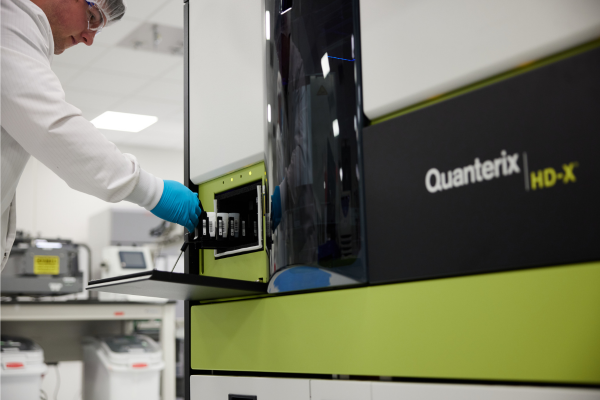
CSF p-Tau 205 Emerges as a Biomarker of Tau Pathology in Alzheimer’s Disease
In the ongoing pursuit of effective diagnostics for Alzheimer’s disease (AD), researchers have sought biomarkers capable of accurately tracking tau pathology—a hallmark of the disorder. A recent study1 published in Acta Neuropathologica introduces an exciting new prospect: cerebrospinal fluid (CSF) phosphorylated tau at position 205 (p-Tau205), a biomarker that challenges existing paradigms by closely mirroring tau tangles rather than amyloid plaques.
Exploring the Role of p-Tau and Neurofibrillary Tangles
Traditionally, most p-Tau fluid biomarkers, such as p-Tau 181, p-Tau 217, and p-Tau 231, have exhibited a closer associations with amyloid plaques rather than tau neurofibrillary tangles (NFTs). The spatiotemporal spreading pattern of NFTs in the brain is referred to as Braak stages, which have been shown to correlate with AD progression and cognitive decline. Post-mortem Braak staging is commonly determined by immunostaining using the AT8 antibody that recognized tau protein phosphorylated at both serine 202 and threonine 205.
Previous studies2-4 have suggested that cerebrospinal fluid (CSF) p-Tau 205 may potentially serve as a biomarker of mid-to-late AD progression and correlate with tau pathology. However, those studies have used mass spectrometry (MS) methods for quantification of CSF p-Tau 205, which have limited application for wide-scale research and clinical use compared with immunoassays1. Therefore, researchers from the University of Gothenburg, Sweden, set out to develop an ultra-sensitive p-Tau 205 immunoassay and assess its ability to reflect NFTs in AD as well as evaluate its diagnostic performance in clinical settings.
The Analytical Approach for p-Tau 205 Immunoassay Assessment
A novel Simoa® CSF p-Tau 205 immunoassay was developed using Homebrew Custom Assay Development and assessed in three independent cohorts representing the AD continuum, non-AD cases and cognitively unimpaired (CU) participants:
- Discovery cohort: patients with biologically defined AD (n = 21) and neurological controls (n = 26) clinically assessed in the Sahlgrenska University Hospital, Gothenburg, Sweden.
- Paris cohort: memory clinic real world cohort (n = 212) who underwent clinical assessments and core CSF AD biomarker analysis at the Centre of Cognitive Neurology at Lariboisière Fernand-Widal Hospital, Université de Paris Cité.
- TRIAD cohort: patients (n = 262) clinically assessed at McGill University, Montreal, Canada and well-characterized by fluid and imagine biomarkers.
CSF p-Tau 205 levels were measured in all three cohorts with the novel in-house developed Simoa® immunoassay using Quanterix’s HD-X™ Automated Immunoassay Analyzer.
Validation of Simoa® p-Tau 205 Immunoassay Across Cohorts
In a comprehensive validation effort, CSF samples from 521 individuals from three cohorts representing the AD spectrum were analyzed. Notably, the results were consistent across cohorts and indicate:
- CSF p-Tau 205 levels increased progressively across the AD continuum, including preclinical AD stages, but not in CU individuals.
- CSF p-Tau 205 is more closely associated with tau pathology amyloid beta pathology.
- CSF p-Tau 205 levels are associated with cognitive decline.
Overall, this study suggests that CSF p-Tau 205 is a biomarker of tau pathology in AD.
Impact on AD Pathophysiology and Diagnostic Research
The study’s findings suggest that CSF p-Tau 205 holds promise as a staging marker that correlates with the progression of tau accumulation in AD. The observed sequential rise in CSF p-Tau 205 levels across Braak stages holds promise that this biomarker may bridge the gap between early amyloid-centric biomarkers and later-stage tau NFT markers. Furthermore, its sensitivity and ability to reflect neurodegeneration and cognitive decline underscore its potential as a valuable tool in disease monitoring and clinical trials. As the development of treatments for AD accelerates, the need for a fluid biomarker of tau pathology to aid in diagnostics, as a screening tool and for monitoring drug efficacy strengthens.
The results of this study demonstrate that CSF p-Tau 205 is a highly specific biomarker of AD reflecting tau pathology. Importantly, this positions CSF p-Tau 205 as a potentially useful biomarker in identifying and staging tau pathology in AD, which may be valuable in clinical settings and clinical trials.
Power Neuropathology Research with Quanterix Simoa® Technologies
Quanterix Simoa® Technologies is raising the bar for diagnostic research by providing ultrasensitivity for biomarker detection from biofluids such as plasma and CSF.
Analyses performed on the fully automated Quanterix HD-X platform can demonstrate excellent precision. Its compatibility with Simoa® assay kits, as well as Homebrew Custom Assay Development, expands research possibilities, making the HD-X a valuable investment for any neuropathology laboratory looking to further their search for biofluid biomarkers that aid diagnosis, disease staging or drug development.
Explore Our Assays for Neurology
References
- Lantero-Rodriguez J, Montoliu-Gaya L, Benedet AL, et al. CSF p-tau205: a biomarker of tau pathology in Alzheimer’s disease. Acta Neuropathol. 2024;147(1):12. Published 2024 Jan 6. doi:10.1007/s00401-023-02659-w
- Barthélemy NR, Li Y, Joseph-Mathurin N, et al. A soluble phosphorylated tau signature links tau, amyloid and the evolution of stages of dominantly inherited Alzheimer’s disease. Nat Med. 2020;26(3):398-407. doi:10.1038/s41591-020-0781-z
- Strain JF, Barthelemy N, Horie K, et al. CSF Tau phosphorylation at Thr205 is associated with loss of white matter integrity in autosomal dominant Alzheimer disease. Neurobiol Dis. 2022;168:105714. doi:10.1016/j.nbd.2022.105714
- Barthélemy NR, Saef B, Li Y, et al. CSF tau phosphorylation occupancies at T217 and T205 represent improved biomarkers of amyloid and tau pathology in Alzheimer’s disease. Nat Aging. 2023;3(4):391-401. doi:10.1038/s43587-023-00380-7